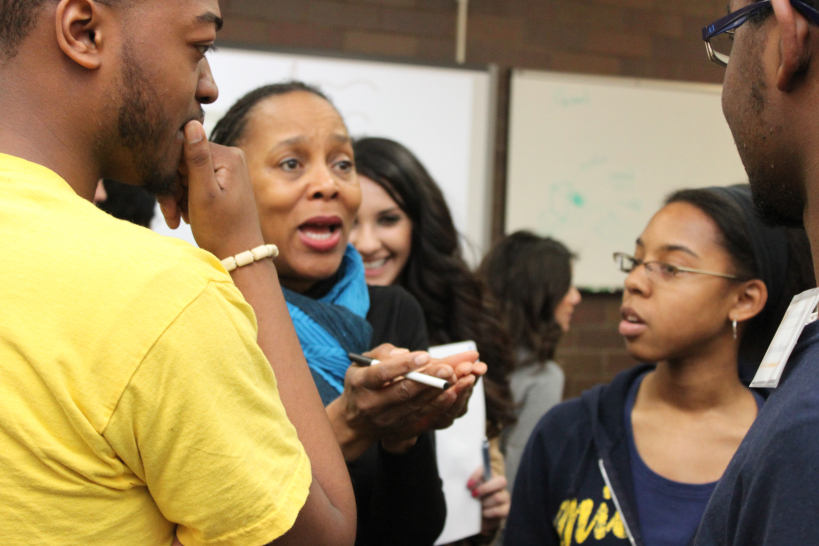Amber Spears, community chair of National Society of Black Engineers (NSBE, U of M chapter) collaborated with Ms. Sharon Burch on the first trip to Chicago.
“I started Alternative Spring Break-Chicago in response to getting together with Ms. Sharon Burch and discussing how NSBE (the National Society of Black Engineers) could help the Office of Recruiting Initiatives in the College of Engineering. I felt that [the office] served an very influential role in helping me make my decision to attend UM…The goal was to spread the message that the College of Engineering at U of M is a great place to attend and that there is a strong minority community that welcomes you there and will support you.”
Our overarching goals are to impress upon high school students in Chicago the importance of a continued education. We believe that one of the main hindrances of high school students in choosing a math or science-based college education is simply the lack of knowledge about these opportunities. Through projects and class discussions, we aim to both educate students about the different careers that can be attained with an engineering degree, and encourage students to put their focus on preparing themselves while in high school to be able to achieve the high goals that they have laid for themselves.
Not every student has big plans to take on a math or science-based education after high school, and we recognize that. For them, our main efforts are to identify self-limiting ideas about their abilities and skills that have accumulated during grade school. These students may not be interested in engineering, but they may feel hesitant about pursuing any other degree at a university because their background, educational progress, or available funds. Though our projects focus on engineering skills and principles, we encourage those students to look at the different options U of M has to offer as well.
Broad Goals for Alternative Spring Break:
- To provide awareness about the field of engineering
- To excite students about engineering
- To challenge creativity and analytically thinking in project related work
- To underscore the skill sets/courses needed to enter engineering degree programs
- To encourage an “I can do that” mentality
- To model successful engineering students
- By example, to provide a figurative road map for how to identify, create, and pursue resources, opportunities that can help students reach their goals
- To facilitate the understanding and importance of global competency

